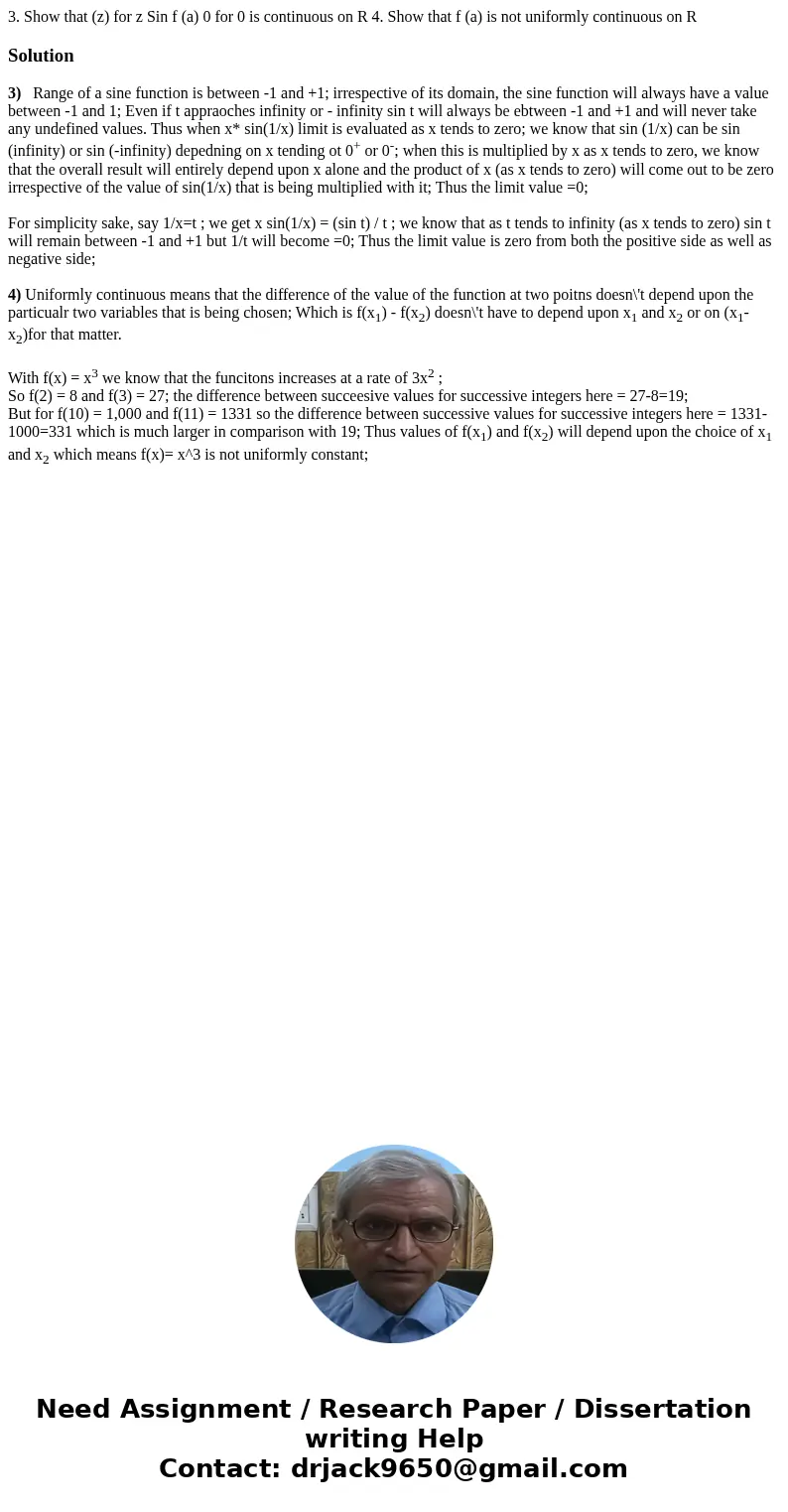3 Show that z for z Sin f a 0 for 0 is continuous on R 4 Sho
Solution
3) Range of a sine function is between -1 and +1; irrespective of its domain, the sine function will always have a value between -1 and 1; Even if t appraoches infinity or - infinity sin t will always be ebtween -1 and +1 and will never take any undefined values. Thus when x* sin(1/x) limit is evaluated as x tends to zero; we know that sin (1/x) can be sin (infinity) or sin (-infinity) depedning on x tending ot 0+ or 0-; when this is multiplied by x as x tends to zero, we know that the overall result will entirely depend upon x alone and the product of x (as x tends to zero) will come out to be zero irrespective of the value of sin(1/x) that is being multiplied with it; Thus the limit value =0;
For simplicity sake, say 1/x=t ; we get x sin(1/x) = (sin t) / t ; we know that as t tends to infinity (as x tends to zero) sin t will remain between -1 and +1 but 1/t will become =0; Thus the limit value is zero from both the positive side as well as negative side;
4) Uniformly continuous means that the difference of the value of the function at two poitns doesn\'t depend upon the particualr two variables that is being chosen; Which is f(x1) - f(x2) doesn\'t have to depend upon x1 and x2 or on (x1-x2)for that matter.
With f(x) = x3 we know that the funcitons increases at a rate of 3x2 ;
So f(2) = 8 and f(3) = 27; the difference between succeesive values for successive integers here = 27-8=19;
But for f(10) = 1,000 and f(11) = 1331 so the difference between successive values for successive integers here = 1331-1000=331 which is much larger in comparison with 19; Thus values of f(x1) and f(x2) will depend upon the choice of x1 and x2 which means f(x)= x^3 is not uniformly constant;

 Homework Sourse
Homework Sourse